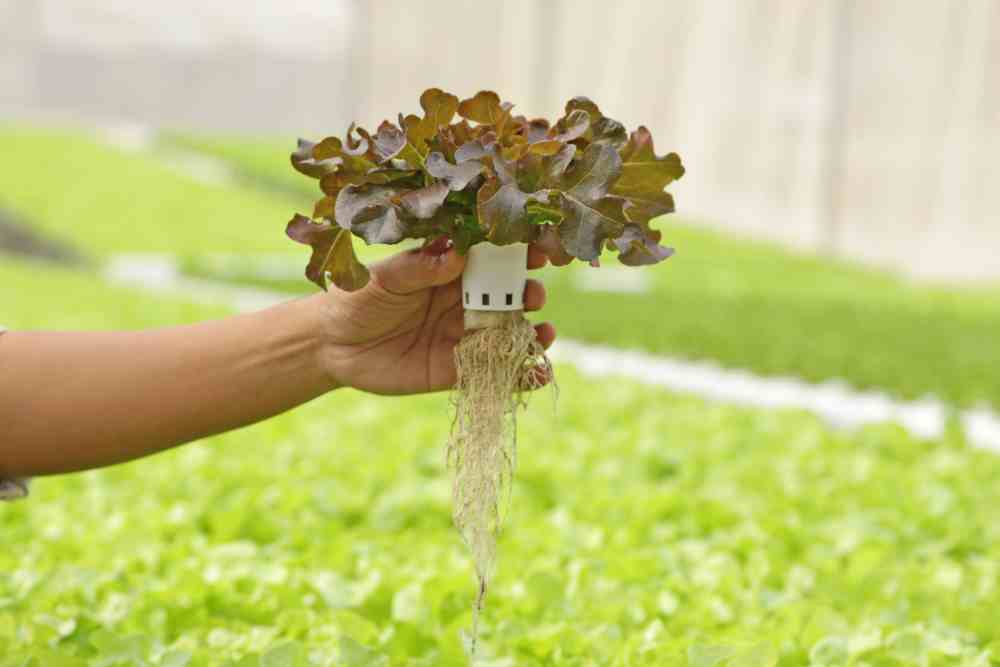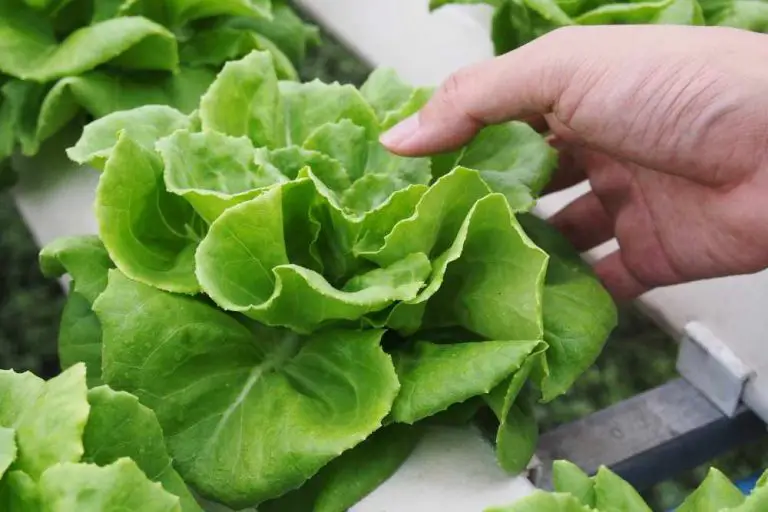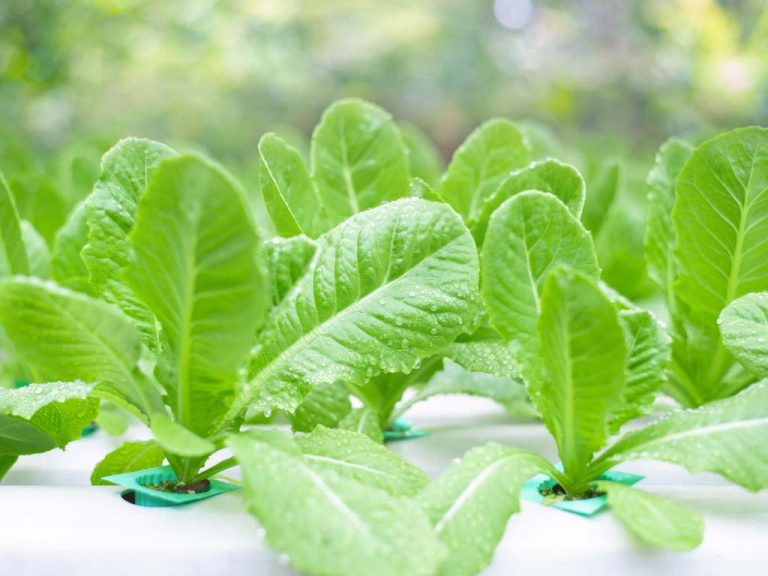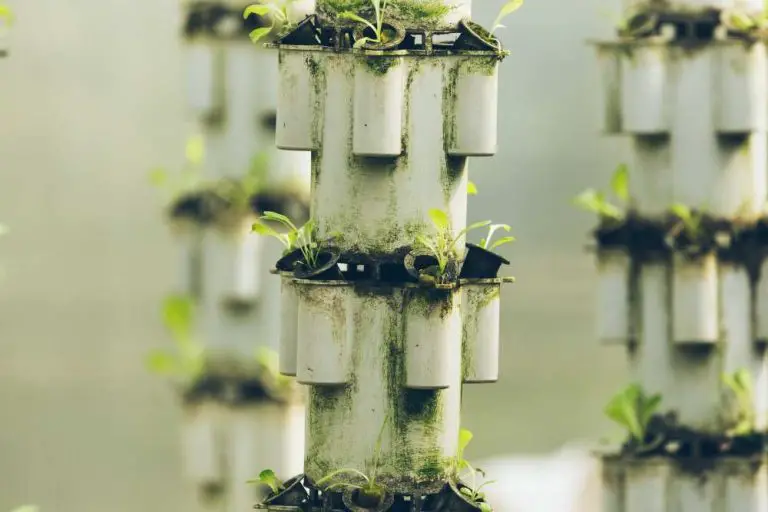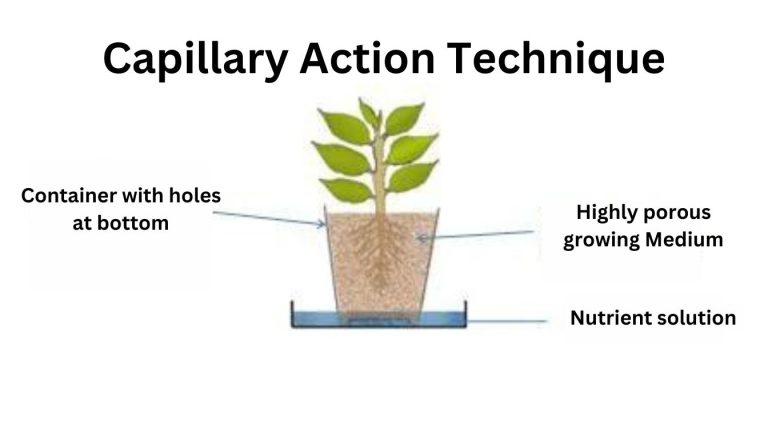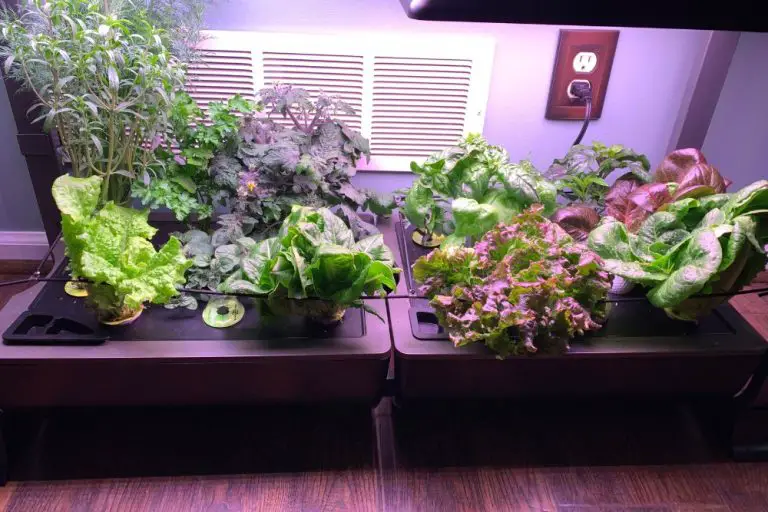Hydroponics: A Deep Dive into Modern Soilless Gardening Techniques
Generally, crops are cultivated in soil. But continuous cultivation of crops in soil has resulted in poor soil fertility, reducing the opportunities for natural soil fertility build-up by microbes. This situation has to lead to poor yield and quality.
Also, conventional crops growing in soil (Open Field Agriculture) are difficult. As it involves large space, a lot of labor, and a large volume of water, and in some places like metropolitan areas, the soil is not available for crop growing. Another serious problem experienced is the difficulty to hire labor for conventional open-field agriculture.
Hydroponics is a system of growing plants that helps reduce some of the above-mentioned problems experienced in conventional crop cultivation. Usually, the most available growing medium is soil. It provides anchorage, nutrients, air, water, etc. for successful plant growth.
Modification of soil as an alternate growing medium tends to be expensive. However, soils do pose serious limitations for plant growth, at times. The presence of disease-causing organisms and nematodes, unsuitable soil reactions, unfavorable soil compaction, poor drainage, degradation due to erosion, etc. are some of them.
Hydroponics offers opportunities to provide optimal conditions for plant growth. Therefore, higher yields can be obtained compared to open-field agriculture.
Hydroponics or soil-less culture offers a means of control over soil-borne diseases and pests, which is especially desirable in the tropics where the life cycles of these organisms continue uninterrupted and so does the threat of infestation. It offers a clean working environment and thus hiring labor is easy.
In hydroponics plants are grown in nutrient solutions. It supplies all nutrient elements needed for optimum plant growth with or without the use of an inert medium such as gravel, vermiculite, Rockwool, peat moss, sawdust, coir dust, coconut fibre, etc. to provide mechanical support. In any hydroponics system, the following basic requirements must be maintained at optimum levels.
- Buffer action of water or the inert medium used.
- The nutrient solution or the fertilizer mixture used must contain all macro and micro elements necessary for plant growth and development.
- Buffer action of the nutrient solution must be in a suitable range so that the plant root system or the inert medium is not affected.
- The temperature and aeration of the inert medium or the nutrient solution are suitable for the plant root system.
The term hydroponics originally meant a nutrient solution culture with no supporting medium. However, plant growing in solid media for anchorage using a nutrient solution is also included in hydroponics.
Hydroponics systems are further categorized as,
- Open (i.e., once the nutrient solution is delivered to the plant roots, it is not reused)
- Closed (i.e., the Surplus solution is recovered, replenished, and recycled).
1. Solution culture or Liquid hydroponics
Circulating methods (closed system)
- Nutrient film technique (NFT)
- Deep flow technique (DFT)
Non-circulating method (open systems)
- Root dipping technique
- Floating technique
- Capillary action technique
2. Solid media culture (Aggregate systems)
These can be open systems or closed systems.
- Hanging bag technique.
- Grow bag technique.
- Trench or through technique.
- Pot technique
3. Aeroponics
- Root mist technique
- Fog feed technique
1. Solution culture or Liquid hydroponics
1.1 Circulating Methods (closed system)
The nutrient solution is pumped through the plant root system and excess solution is collected, replenished, and reused in these methods.
1.1.1 Nutrient Film Technique (NFT)
A true hydroponics system where the plant roots are directly exposed to the nutrient solution. A thin film (0.5 mm) of nutrient solution flows through channels. The main features of an NFT system are shown in the following figure. The channel is made of a flexible sheet.
The seedlings with the little growing medium are placed at the center of the sheet and both edges are drawn to the base of the seedlings and clipped together to prevent evaporation and to exclude light. The cross-section of the channel is shown in the figure. The growing medium absorbs nutrient solution for young plants and when the plants grow the roots form a mat in the channels.

The maximum length of the channel is 5-10 m and is placed at a sloping drop of 1 in 50 to 1 in 75. The nutrient solution is pumped to the higher end of each channel and flows by gravity to the lower end wetting the root mat. At the lower end of the channels, the nutrient solution gets collected and flows to the nutrient solution tank. The solution is monitored for salt concentration before recycling.
Some growers replace the nutrient solution every week with fresh solutions. Adjust the flow rate of the nutrient solution to 2-3 liters per minute depending on the length of the channel. Provide enough support for tall-growing plants in this technique In practice, it is very difficult to maintain a very thin film of nutrient solution, and therefore, this technique has undergone several modifications.
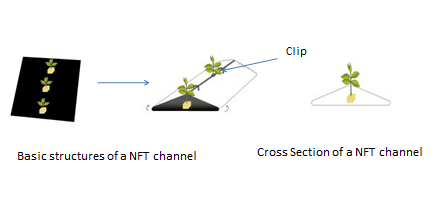
1.1.2 Deep Flow Technique (DFT) – Pipe System
The 2-3cm deep nutrient solution flows through 10 cm diameter PVC pipes to which plastic net pots with plants are fitted. The plastic pots contain planting materials and their bottoms touch the nutrient solution that flows in the pipes.
The PVC pipes may be arranged in one plane or zig-zag shape depending on the types of crops grown. The zig-zag system utilizes the space efficiently but is suitable for low-growing crops.
The single-plane system is suitable for both tall and short crops. When the recycled solution falls into the solution in the stock tank, the nutrient solution gets aerated. The PVC pipes must have a slope of a drop of 1 in 30-40 to facilitate the flow of nutrient solution. Painting the PVC pipes white will help reduce the heating up of the nutrient solution.


In this technique, plants are established in plastic net pots and fixed to the holes made in the PVC pipes. Old coir dust or carbonized rice husk or a mixture of both may be used as planting material to fill the net pots. Place a small piece of the net as a lining in the net pots to prevent the planting material from falling into the nutrient solution. Small plastic cups with holes on the sides and bottom may be used instead of net pots.

1.2 Non-Circulating Methods (open system)
The nutrient solution is not circulated but used only once. When its nutrient concentration decreases or pH or Ec changes, it is replaced.
1.2.1 Root Dipping Technique
Plants are grown in small pots filled with little growing medium. The pots are placed in such a way that the lower 2 – 3 cm of the pots are submerged in the nutrient solution. Some roots are dipped in the solution while others hang in the air the solution for nutrient and air absorption, respectively.

- Root dipping technique for non-root tuber crops
Select a container for the nutrient solution. The container can be almost any kind and shape except metal containers. Styrofoam or wooden boxes, plastic buckets, or even cement troughs can be used.
Styrofoam boxes are good as they can maintain the temperature of the nutrient solution. Place a black plastic sheet of at least 0.15 mm thickness as lining inside the boxes to avoid leakage and to reduce the light. The depth of the box must be about 25 – 30 cm to provide enough solution as well as enough space above the solution for oxygen-absorbing roots.

A board is required to place on the container to prevent light penetration. The planting pots are also fixed on this board.

The number of holes in the board to fix the pots depends on the crops to be grown. An additional hole is necessary for air circulation and refilling. Seedlings are transplanted in plastic pots filled with sterilized old coir dust or carbonized rice husk or a mixture of the two. Plastic net pots or plastic cups can be used. Make some holes at the bottom and on the sides of the plastic cups for roots to emerge and for the nutrient solution to seep into the potting material.


Place a small piece of the net inside the pots or cups to prevent potting materials from falling into the solution. Seeds could also be planted directly in the pots to raise the crop. Fill 2/3rd of the container with nutrient solution.
The pots with the plants are fitted onto the board as shown in figure 18 and will be placed on top of the box. Only the bottom 2 cm of the pots will be submerged in a nutrient solution. The above steps complete the formation of a non-circulating hydroponics system.
These boxes can be placed in net houses or open spaces or under rain shelters or indoors. Tall growing plants will require some support to prevent falling.
Maintain adequate air space above the nutrient solution in the container. The success of the non-circulating hydroponics system depends on the rapid growth and quantity of roots that are exposed to the air.
These roots absorb oxygen for the plants. Ideally, the top two-thirds of the young root system must be in the air and the rest must be floating/ dipping in the nutrient solution.
During crop growth, when the solution level in the container goes down, the ion concentration may increase. Such an increase is detrimental to plant growth. If this condition is observed, siphon out the remaining solution and refill with fresh solution.

- Root dipping technique for root tuber crops
A 20 – 30 cm deep container can be used. It is lined with a black polythene sheet and filled 1/3rd with nutrient solution. Leaving a space of about 7.5 cm above the solution level, fix a wire mesh in the box, and fill it with an inert medium.
The seedlings/seeds are planted in the medium. At the early stage, the nutrient solution will reach the planting medium through the perforated PVC pipe filled with the growing medium by capillary action. Later, plant roots will grow into the nutrient solution through the wire mesh. At this stage, the perforated tube will be removed. The resulting hole will facilitate aeration and refilling.
1.2.2 Floating Technique
This is similar to the box method but shallow containers (10 cm deep) can be used. Plants established in small pots are fixed to a Styrofoam sheet or any other light plate and allowed to float on the nutrient solution filled in the container and the solution is artificially aerated.

1.2.3 Capillary Action Technique
Planting pots of different sizes and shapes with holes at the bottom are used. Fill these pots with an inert medium and plant seedlings/seeds in that inert medium. These pots are placed in shallow containers filled with the nutrient solution.
Nutrient solution reaches inert medium by capillary action. Aeration is very important in this technique. Therefore, old coir dust mixed with sand or gravel can be used. This technique is suitable for ornamental, flower, and indoor plants.

The following techniques involving inert solid media can be practiced using locally available materials. The media material selected must be flexible, friable, with water and air holding capacity, and can be drained easily. Also, it must be free of toxic substances, pests, disease-causing microorganisms, nematodes, etc. The medium used must be thoroughly sterilized before use,
- Inorganic natural media (Gravel culture)
- Organic natural media (Smoked rice husk, sawdust, coconut fibre, coir dust peat moss)
- Inorganic artificial media (Rock wool, perlite, vermiculite)
- Organic artificial media (Polyurethane, polyphenol, polyether, polyvinyl)
Tannin and acids present in the newly extracted coir-dust affect plants. Therefore, use at least 06 months old coir-dust. Dry, clean compressed coir-dust blocks are available for sale in the market. Different techniques described below, according to the method of holding the planting medium, can be practiced.
2. Solid media culture (Aggregate systems)
2.1 Hanging Bag Technique (Open system)
About 1 m long cylinder-shaped, white (interior black) UV-treated, thick polythene bags, filled with sterilized coconut fibre are used. These bags are sealed at the bottom end and tied to a small PVC pipe at the top. These bags are suspended vertically from overhead support above a nutrient solution-collecting channel. Therefore, this technique is also known as the ‘vertical-grow’ technique. Seedlings or other planting material established in net pots are squeezed into holes on the sides of the hanging bags.
The nutrient solution is pumped to the top of each hanging bag through a micro-sprinkler attached inside the hanging bags at the top. This micro-sprinkler evenly distributes the nutrient solution inside the hanging bag. The nutrient solution drips down wetting the coconut fibre and plant roots. The excess solution gets collected in the channel below through holes made at the bottom of the hanging bags and flows back to the nutrient solution stock tank.
The bags are not as heavy as they are filled with coconut fibre and can be used for about 02 years. The number of plants per bag varies depending on the plants. About 20 lettuce plants can be established per bag. This system is suitable for leafy vegetables, strawberries, and small flower plants. Black color tubes will have to be used for nutrient solution delivery to prevent mold growth inside.
2.2 Grow Bag Technique
In this technique, 1 – 1.5 m long white (inside black), UV-resistant, polythene bags filled with old, sterilized coir dust are used. These bags are about 6 cm in height and 18cm wide. These bags are placed end to end horizontally in rows on the floor with walking space in between. The bags may be placed in paired rows depending on the crop to grow. Make small holes on the upper surface of the bags and squeeze seedlings or other planting materials established in net pots into the coir dust. 2-3 plants can be established per bag. Make 02 small slits low on each side of the bags for drainage or leaching.
Fertigation with a black capillary tube leading from the main supply line to each plant is practiced. The nutrient solution and water may also be added manually to these bags. Depending on the stage of crop growth and the prevailing weather conditions, vary the amount of water applied.
Make sure that the growing media is not completely saturated with water or nutrient solution, as it prevents the oxygen supply to plant roots. Cover the entire floor with white UV-resistant polythene before placing the bags. This white polyethylene reflects the sunlight on the plants. It also reduces the relative humidity. In between plants and the incidence of fungal diseases. When tall-growing plants are established supporting structures will be necessary.
2.3 Trench or Trough Technique

In this open system, plants are grown in narrow trenches in the ground or above-ground troughs constructed with bricks or concrete blocks. Both trenches and troughs are lined with waterproof material (thick UV-resistant polythene sheets in two layers) to separate the growing media from the rest of the ground. The width of the trench or trough can be decided depending on the ease of operation.
Wider trenches or troughs will permit two rows of plants. The depth varies depending on the plants to grow and a minimum of 30 cm may be necessary. Old coir dust, sand or gravel, peat, vermiculite, perlite, old sawdust, or a mixture of these materials can be used as the media for this culture.
The nutrient solution and water supplied through a drip irrigation system or manual application is also possible subject to labor availability. A well-perforated pipe of 2.5 cm diameter may be placed at the bottom of the trough or trench to drain out excess nutrient solution. Tall-growing vine plants (cucumber, tomato, etc.) need additional support to withstand the weight of the fruits.

2.4 Pot Technique
The pot technique is similar to trench or trough culture but growing media is filled in clay or plastic pots. The volume of the container and growing media depend on the crop growth requirements. The volume ranges generally from 01 to 10 liters. Growing media, nutrient solution supply, providing support to plants, etc. is similar to that of the trough or trench culture.

3. Aeroponic Technique
Aeroponic is a method of growing plants where they are anchored in holes in Styrofoam panels and their roots are suspended in the air beneath the panel. The panels compose a sealed box to prevent light penetration encourage root growth and prevent algae growth.
The nutrient solution is sprayed in fine mist form on the roots. Misting is done for a few seconds every 2 – 3 minutes. This is sufficient to keep roots moist and nutrient solution aerated. The plants obtain nutrients and water from the solution film that adheres to the roots.
The aeroponic culture is usually practiced in protected structures and is suitable for low-leafy vegetables like lettuce, spinach, etc. The principal advantage of this technique is the maximum utilization of space. In this technique, twice as many plants may be accommodated per unit floor area as in other systems. Another potential application of this technique is in the production of plants free of soil particles from cuttings for exports.

- 15 Ingenious Kitchen Garden Ideas to Cultivate Freshness Right at Home - April 7, 2024
- 10 Top Picks Best Plants for Open Terrarium - April 2, 2024
- 21 Easy and Cheap Walkway Ideas for a Charming Garden - March 31, 2024

